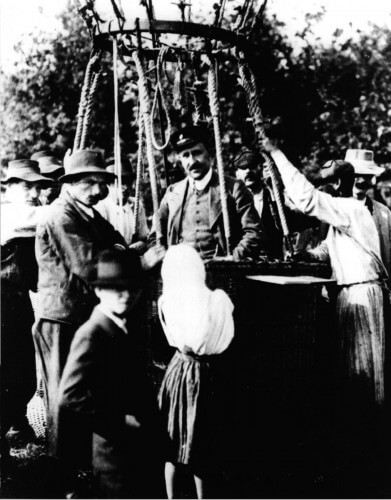At the beginning of the last century, scientists measured "strange" radiation, which many saw as radioactive radiation coming from the depths of the earth. The Austrian physicist Victor Hess discovered that it comes from the sky and won the Nobel Prize

At the beginning of the last century, scientists measured "strange" radiation, which many saw as radioactive radiation coming from the depths of the earth. The Austrian physicist Victor Hess made electroscopic measurements at different heights (he used, among other things, a hot air balloon), which led him to the conclusion that the radiation comes from outer space, and not from the bowels of the earth. He also showed that the sun cannot be the main source of the "cosmic radiation" (a conclusion he drew from measurement using a balloon, during the solar eclipse in 1912). This discovery earned Hess the Nobel Prize in Physics for 1936.
The Italian physicist Damsoni Pacini worked at the same time on the question of the "strange" radiation. Instead of using a balloon for measurements from a variable height, he performed measurements below sea level - and reached the same conclusion: the Earth cannot be the source of the radiation. Damasini died in 1934, and some believe that if he hadn't, he would have stood next to Hess at the Nobel Prize ceremony.
Understanding the essence of cosmic radiation greatly advanced nuclear physics and the physics of elementary particles, and directly contributed to the discovery of the positron, the muon and the pi muon. It is known that 90% of cosmic radiation nuclei are hydrogen nuclei (protons), 9% are helium nuclei (alpha radiation), and all other elements make up less than 1%. And yet, 100 years after its discovery, cosmic radiation is still a mystery.
In the 50s, Weizmann Institute of Science scientists, including Prof. Gideon Yekothiali and Prof. Yehuda Eisenberg, studied cosmic radiation. In the founding documents of the physics department (which later became the faculty) it was written, among other things, that the institute's scientists would study the structure of the nucleus and cosmic radiation. In the 90s of that century, Prof. Eli Waxman, from the Department of Particle Physics and Astrophysics, proposed a model describing the sources of cosmic radiation. This model predicts the emission of neutrino particles (neutrinos) from the radiation flashes. Today the model is being tested using the IceCube particle detector, which has been installed and is working in Antarctica.

2 תגובות
Just this week I saw an interesting video on the subject.
Cosmic Rays Mystery Solved:
http://www.youtube.com/watch?v=aTBvPxQIFts
There is a problem with defining cosmic radiation as 90% hydrogen nuclei. In fact, it is a differential variation of the measurements that results from the spread of the extracennial wavelengths and multiconcentric effects that result from fluctuations in the Fx2T trend.
I expect that anyone who writes about the field will emphasize this because it is a figure that sheds light and clarity on the subject!